I am a post-menopausal woman and am troubled by hair loss. Visually it is hard to tell, but I know by the large amounts of hairs I find on my clothes and on the comb! Is there anything that I can do, or use, that would stop this?
Susun’s response:
From the Wise Woman perspective:
Step 1. Collect information . . .
Hair loss at mid-life (androgenic alopecia) is more strongly linked to genes than diet or lifestyle. Those of European origins are far more likely to experience it than Asians, Native Americans, Africans, or African-Americans. Hair loss starts earlier and becomes more extreme on men’s heads, but just as many women deal with receding hairlines and balding pates. Roughly half of all women experience some hair loss during their menopausal years. Two-thirds of post-menopausal women deal with thinning hair or bald spots. And no one likes it. Americans spend a billion dollars a year trying to regrow their hair!
Normal hair loss (50-100 hairs a day) is gradual. Sudden unexplained loss is not normal. Events which can trigger hair loss include pregnancy, childbirth, menopause, severe emotional stress, rapid or profound weight loss, thyroid disorders, pituitary problems, malnutrition, iron deficiency, lack of protein, large doses of vitamin A, chemotherapy, radiation, general anesthesia, chronic illness, scarlet fever, syphilis, certain medications (see Step 5), and hair abuse including bleaching, permanents, tight braids, tight pony tails, tight wigs, and tight hats.
The National Alopecia Areata Foundation can help you contact a local hair loss support group, and gather more information.
Step 2. Engage the energy . . . .
Homeopathic remedies for women with hair loss include:
- Lycopodium: loss precipitated by hormonal fluctuations.
- Sepia: especially for menopausal women who have sweaty flushes and heavy bleeding
- Phosphoric acid: loss after grief or extreme emotion, accompanied by exhaustion.
Step 3. Nourish and tonify . . .
- Infusion of stinging nettle, 2-4 cups a day, strengthens hair and checks falling hair with its superb supplies of protein, B vitamins, vitamin E, iron, and other minerals. Regular use restores thickness, body, shine and sheen to hair. If you have any infusion left over, pour it on your head and rub it into your scalp for faster results.
- “Every grey hair represents a day with too few minerals,” a wise woman said to me. Actually, the color of hair is produced by special cells which gradually die as we age. But it is true that hair is loaded with minerals, and getting extra minerals may keep those color cells alive longer. To increase my mineral intake, and keep my hair healthy, I eat more yogurt, drink more nourishing herbal infusions, prepare more mineral-rich soups, use more herbal vinegars, and increase the amount of seaweed in my diet.
- Lack of minerals, especially iron, can cause hair loss. Yellow dock is one of my favorite iron-tonics.
- Herbalist Amanda McQuade Crawford suggests using lemon balm or lemon grass infusion as a hair rinse to prevent hair loss.
- Burdock seed oil, one of the best selling hair tonics in Russia, is especially recommended for those with thinning hair or hair loss. Apply to your hair and scalp, leave on overnight and shampoo it out the following day. Repeat as needed.
- Just plain olive oil is also a tremendous hair tonic. So is jojoba oil. Apply a handful of either to hair and scalp, wrap well and leave on overnight, washing it out the next morning.
- I know you know, but let me say it again, exercise! Yes, it can make your hair healthier too.
Step 4. Sedate/Stimulate . . .
While some temporary loss of hair at menopause is considered normal, something worse may be brewing. Thin, dry hair is one of the first signs of an underactive thyroid. Hair loss is also an early sign of lupus, an autoimmune disease.
• Chugging down a gulp of cod liver oil or wheat germ oil every day for six weeks could help your hair.
• Menopause sends lots of energy to the crown of your head. That can overstimulate the scalp and cause hair loss (and/or headaches). Get your energy moving with a scalp massage. Let your head calm down and your hair cool off.
• Blow dryers, dyes, perms, and other harsh treatments damage hair and scalp. Rosemary essential oil, a few drops rubbed into the scalp several times a week, repairs the damage, increases hair growth, and improves hair texture.
• Other essential oils which improve hair growth and reduce hair loss include lavender oil, lemon oil, thyme oil, sage oil, and carrot seed oil. You can mix 10-20 drops of any of these into 4 ounces of plain olive oil, infused burdock seed oil, or jojoba oil. Other essential oils said to reduce hair loss include birch, calendula, chamomile, cypress, rose, and yarrow.
• Avoid chlorinated water on your hair. A shower filter is more important than a drinking water filter. And cut down on the number of times you wash your hair. Once every 5-10 days is ideal for healthy hair.
• Avoid cayenne. Heroic herbalists say it increases hair growth by improving blood circulation to the scalp. But when there is hair loss, says Janet Roberts MD, specialist in women’s hair loss and member of the Oregon Menopause Network, there are inflamed follicles. Cayenne increases inflammation, ultimately increasing hair loss.
Step 5a. Use supplements . . .
- Dry, brittle, thin hair is often due to a deficiency in one or more of these nutrients: protein, vitamin A, vitamin B12, vitamin C, iron, zinc, essential fatty acids. Food and herbal sources of these nutrients are preferable to pills.
- Avoid hair weaving, a cosmetic treatment that weaves replacement hair in with the still existing hair; it actually causes more loss (by creating traction alopecia).
Step 5b. Use drugs . . .
- Hair loss can be caused by drugs, including: birth control pills, anticoagulants, diet pills, thyroid medications; non-steroidal anti-inflammatory drugs including aspirin, ibuprofen, and Aleve; cholesterol-lowering drugs such as clofibrate and gemfibrozil; arthritis medications such as gold salts (auranofin), indomethacin, naproxen, sulindac, and methotrexate; beta-blockers such as atenolol (Tenormin), metoprolol (Lopressor), nadolol (Corgard), propranolol (Inderal), and timolol (Blocadren); and ulcer drugs such as cimetidine (Tagamet), ranitidine (Zantac), and famoridine (Pepcid). And, of course, chemotherapy.
- Minoxidil (Rograine) dilates blood vessels, encouraging baby-fine hair. Only the 2% solution is approved for women. Of those who use it only 19 percent achieve even moderate regrowth; 40 percent have minimal regrowth. Meanwhile, 40 percent of the women using the placebo had regrowth! CAUTION: Side effects in women include unwanted hair growth on the face, heart disturbances, and dizziness.
- Fertile women are not allowed to use (or even touch) finasteride (Propecia) for fear of the severe birth defects it causes. This is probably a blessing in disguise, as the side-effects (loss of libido, lip swelling, breast engorgement, birth defects) are not pleasant. Finasteride is completely ineffective in reversing hair loss for postmenopausal women.
Tell your men friends a dose of .2 mg (one-fifth the normal dose) works just as well, costs less ($10 a month instead of $50), and is gentler on the liver.
- Hormones, including ERT, HRT, birth control pills, and anti-androgens (cypoterone acetate, spironolactone, and fluramide) are used singly or in combination to treat women with androgenic alopecia.
Step 6. Break and enter . . .
- Hair transplants can cover a bald spot but are far less successful on women than on men. Micrografts do a better job of dealing with women’s diffuse pattern of hair loss.
- “Scalp lifts” tighten the scalp, making hair appear thicker and fuller.
Wise Woman Spiral ©iStockphoto.com / Chuck Spidell | Water ©2004 Joanna Barnum



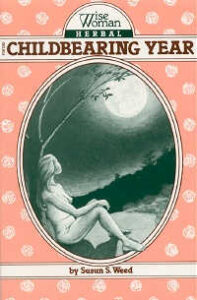
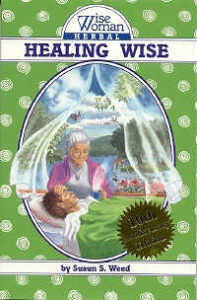
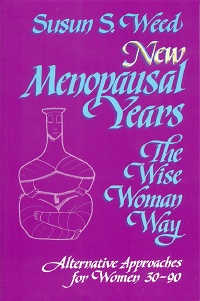
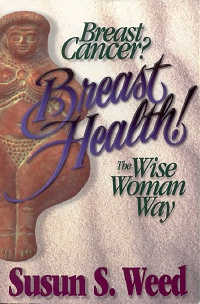

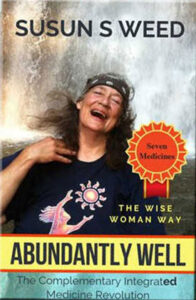
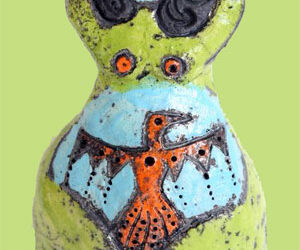

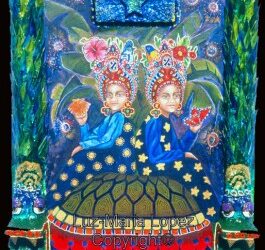
0 Comments